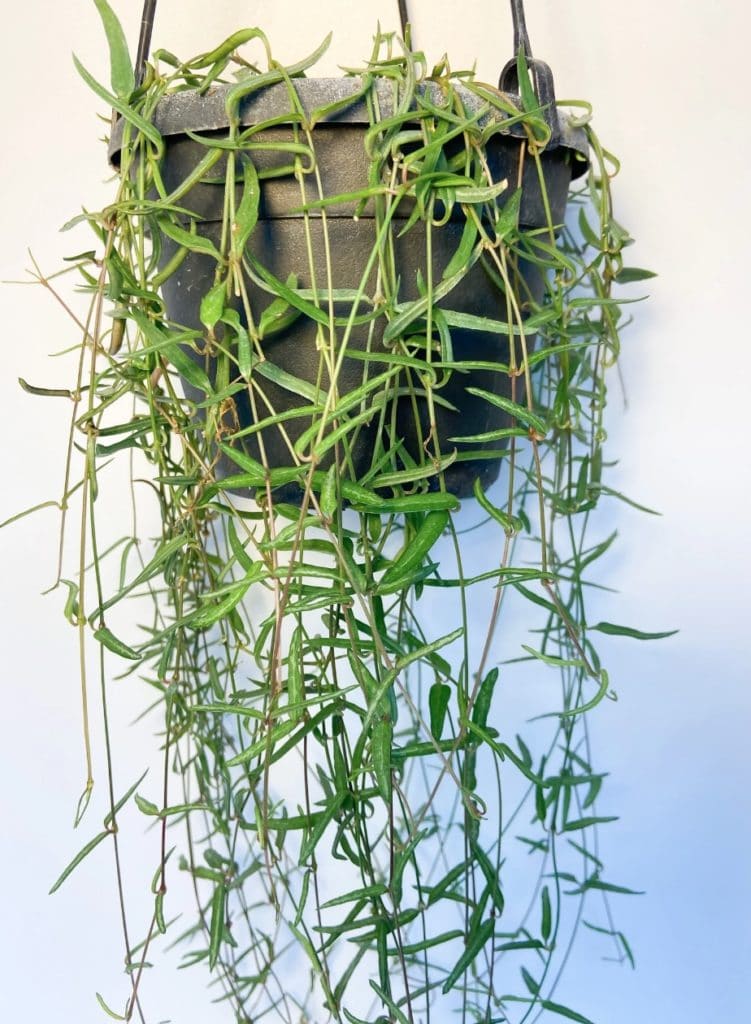The string of needles plant is a succulent native to South Africa. It has long, needle-like leaves that are green and gray in color. This plant does well in hot, dry climates and can be grown indoors or outdoors. String of needles plants are easy to care for and can be propagated by division or cuttings. Read on for more information about how to care for this interesting plant.
What is a String of Needles Plant?
String of needles plants are succulents with long trailing vines and needle-like leaves. These plants have the scientific name Ceropegia Linearis and are part of the Apocynaceae family.
Their vines can grow up to six feet long and look great trailing from a hanging basket or over the edge of a shelf or windowsill. These plants are native to South Africa, where they grow in dry, arid climates. They are commonly kept as a houseplant worldwide and can also be grown outdoors in warmer climates (USDA zones 11a to 11b).
The string of needle plant produces light pink to white flowers in the spring or summer. Blooms generally last for around six weeks.
How to Grow String of Needles Plants
Growing string of needles plants is easy because they do well in arid conditions and do not need much water to thrive. They like climates that are hot and dry and can grow well indoors or outdoors. Here are some tips to help you grow a thriving string of needles succulent.
Sunlight requirements
String of needles plants prefer bright, indirect sunlight. Although they can survive in lower light conditions, they grow best in full sun. These plants need enough sunlight to thrive and grow best outdoors. They also do well on a sunny windowsill.
Water requirements
String of needles plants do not need much water to thrive. They should be watered once or twice a month during the growing season and less often in winter. The soil should dry out completely between watering sessions. You can drench your plant when watering. They should be grown in a pot that can drain excess water away from the plant’s roots. This will reduce the risk of waterlogging, which can cause root rot.
Humidity
String of needles plants like moderate humidity, as they come from a hot climate. However, they are fairly adaptable and grow well in the average home.
Fertilization
String of needles plants do not need to be fertilized very often, but they can benefit from an occasional dose of fertilizer during the growing season. You can repot your plant every few years, and the new soil will provide additional nutrients.
Soil
String of needles plants prefer well-drained soil. To make a good quality soil, mix three parts potting soil with 1 part sand or perlite. You can also add a layer of gravel to the bottom of the pot when repotting, as this will help with drainage.
Propagating string of needle plants
String of needle plants can be propagated either by root cuttings or seeds. The best way to grow a new plant is by taking cuttings as string of needles are slow growers, and it will take years to grow a new plant from seed.
Propagation is typically done in the spring and summer months when new growth is occurring. Cut a section of stem that includes at least two nodes with a sterilized pair of scissors. Wait for a few days until the ends have calloused over, and then plant the cuttings in a loose mixture of soil, perlite, and sand. Make sure that the end of each cutting is carefully covered with earth and then water thoroughly. The cuttings will sprout roots and can then be planted in a separate post after a few weeks.
Conclusion
The string of needle plant is an easy to grow succulent, making them ideal for beginners. These plants are cared for in the same way as other succulent varieties. They are pretty drought-resistant but should never be neglected. Their beautiful gray and green foliage is eye-catching, and they produce small pink flowers in the spring and summer.
String of needles are slow-growing but can get quite large in time. Their trailing vines make a great focal point in any room, and they can be grown in hanging baskets on a patio.
Related: String of Turtles
